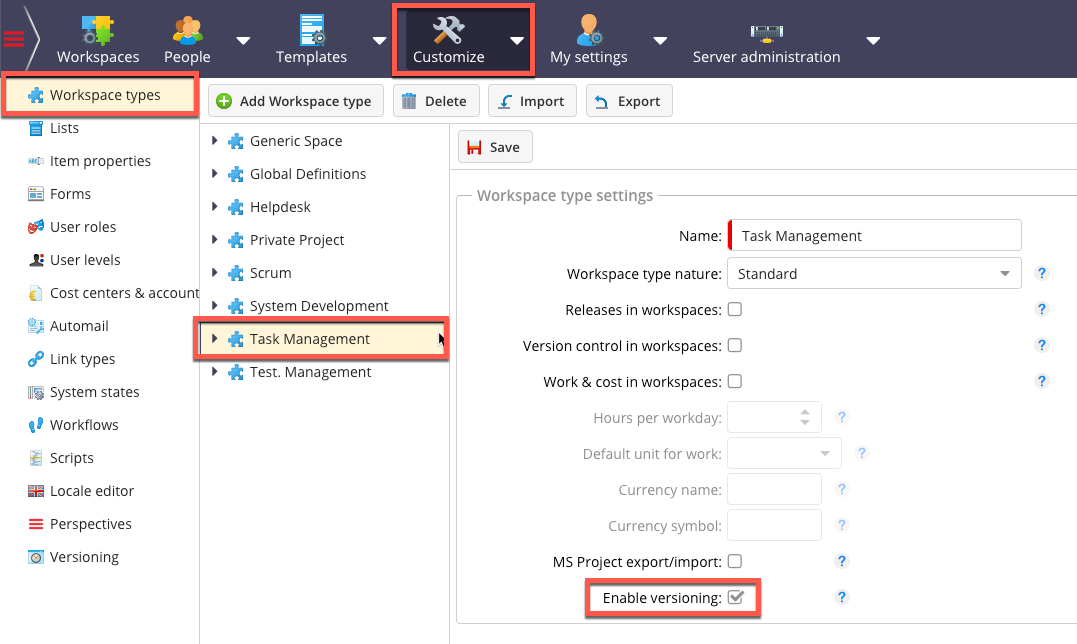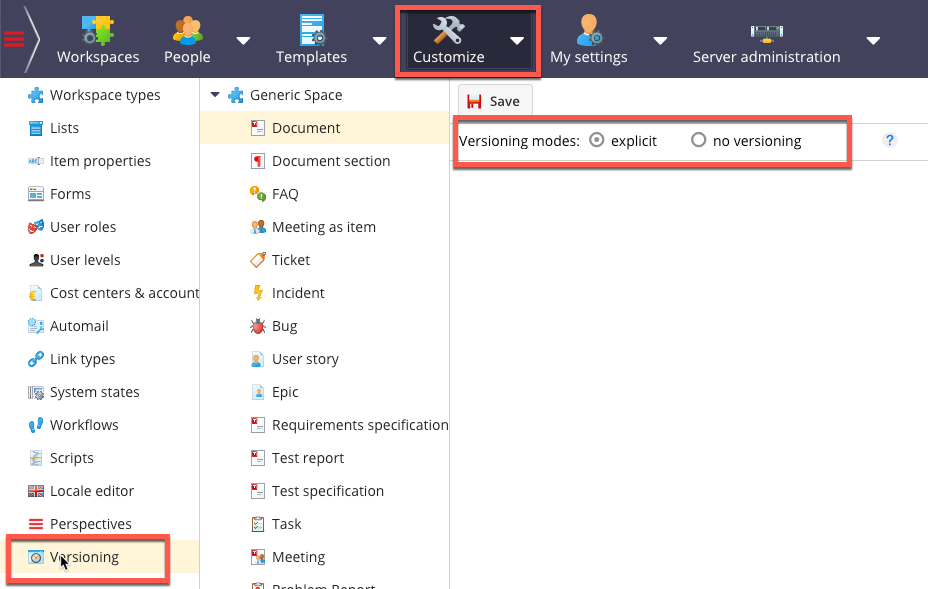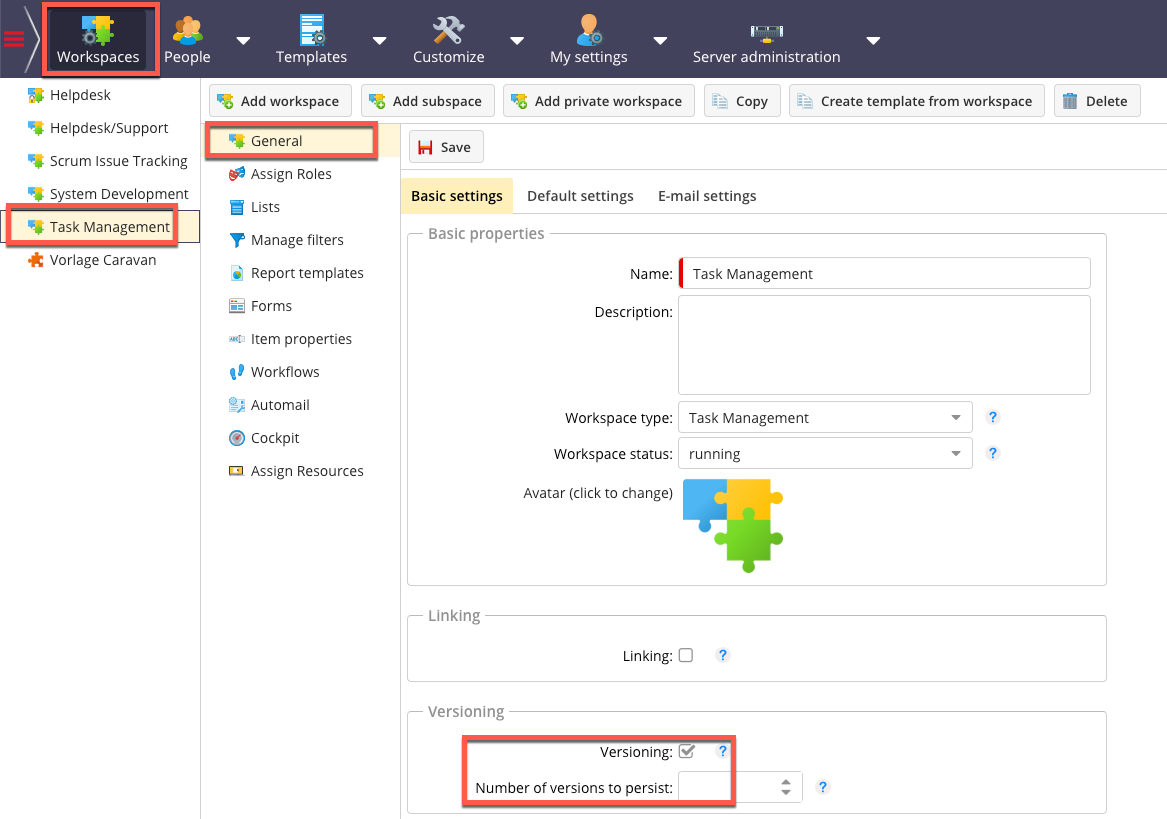Configure versioning¶
In order to be able to use the “Versioning” feature, you must configure the relevant work workspace types, item types, and work workspaces accordingly.
Step 1: Configure workspace type for versioning¶
In the first step, you need to activate the feature “Versioning” for the desired workspace types.

Implicit versioning means that subordinate items in a document automatically receive a new version when the document itself receives a new version. This typically affects document sections and embedded items. New versions of such items cannot be created directly (explicitly), but only indirectly via the (explicit) creation of a new version of the superordinate document.
Step 2: Configure item types for versioning¶
In the second step, you have to define for each affected workspace type and item type which item attributes are to be versioned and according to which method (explicit or implicit). Switch on the feature “Versioning” for the required workspace types.

Implicit versioning means that subordinate items in a document automatically receive a new version when the document itself receives a new version. This typically affects document sections and embedded items. New versions of such items cannot be created directly (explicitly), but only indirectly via the (explicit) creation of a new version of the superordinate document.
As with other settings, the versioning settings are inherited downwards to the more specific configurations.
Step 3: Configure workspace for versioning¶
In the last configuration step, you will have to activate versioning for a specific workspace.
